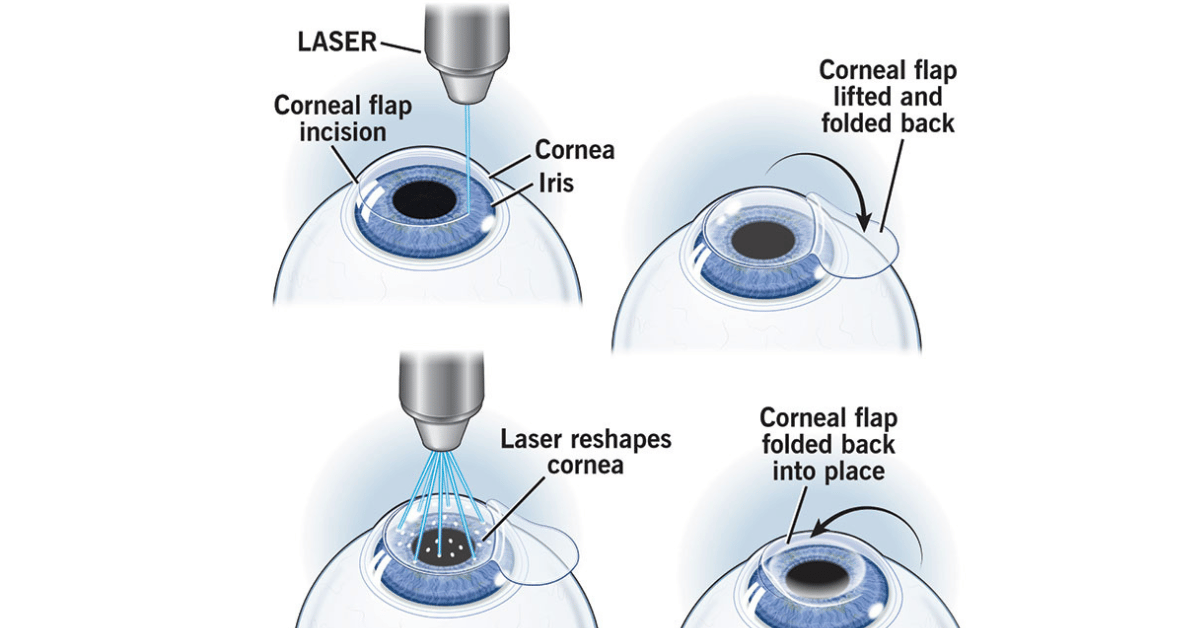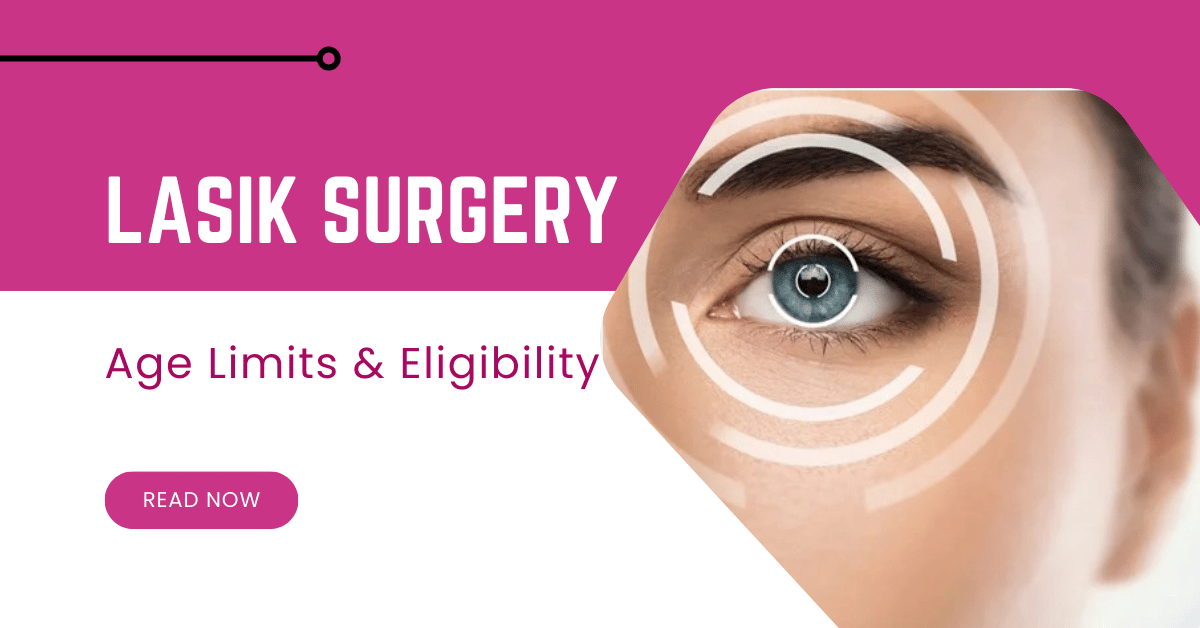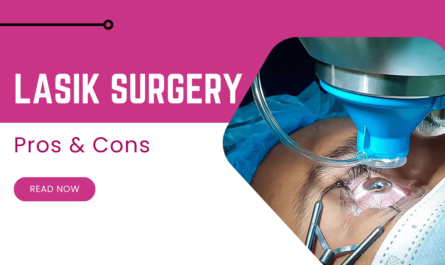Introduction
Laser-Assisted in Situ Keratomileusis (LASIK) surgery has revolutionized vision correction, offering millions the opportunity to live without glasses or contact lenses. As one of the most popular refractive eye surgeries, LASIK corrects vision problems like nearsightedness, farsightedness, and astigmatism. However, not everyone is an ideal candidate for the procedure. Age and other eligibility factors play a crucial role in determining whether LASIK is suitable for you. This blog will cover the ideal age for LASIK, eligibility criteria, and key considerations to help you make an informed decision.
Understanding LASIK Surgery: How It Works
LASIK surgery is a type of refractive eye surgery that reshapes the cornea using a laser to improve how the eye focuses light. Here’s how the procedure works:

- Creating a Corneal Flap – A thin flap is created on the cornea using a microkeratome blade or a femtosecond laser.
- Reshaping the Cornea – A specialized excimer laser removes small amounts of corneal tissue to correct refractive errors.
- Flap Repositioning – The corneal flap is placed back into position, where it heals naturally without stitches.
The procedure is quick, typically taking about 15 minutes per eye, and patients often experience significantly improved vision within 24 hours.
Ideal Age for LASIK Surgery
1. Minimum Age Requirement
Most ophthalmologists recommend that LASIK candidates be at least 18 years old. The reason is that the eyes are still developing in childhood and adolescence, and prescription changes are common during these years. Performing LASIK too early may lead to unstable vision post-surgery.
2. Optimal Age Range for LASIK
The best age range for LASIK surgery is between 20 to 40 years. During this period:
- Vision prescription tends to be more stable.
- The cornea is generally healthy.
- Recovery and results are usually optimal.
3. LASIK for Patients Over 40
While LASIK is still an option after 40, some additional considerations include:
- Presbyopia: Around the age of 40, people naturally begin experiencing difficulty with near vision due to presbyopia. LASIK does not correct presbyopia but monovision LASIK (one eye corrected for near vision and the other for distance) can be considered.
- Cataracts: If cataracts develop, they may require separate treatment, making LASIK unnecessary.
4. LASIK After 60: Is It Safe?
LASIK can be performed in older patients if they have healthy corneas and no significant eye diseases. However, conditions like dry eye syndrome and cataracts, which are more common with age, may impact eligibility.
LASIK Surgery Eligibility Criteria
While age is a major factor, other conditions determine LASIK suitability. The ideal candidate for LASIK should:
- Have a stable vision prescription for at least one year.
- Have a corneal thickness sufficient for reshaping.
- Be free of severe dry eye syndrome.
- Not have eye conditions like glaucoma, cataracts, or keratoconus.
- Not be pregnant or nursing (hormonal changes can affect vision).
If a patient does not meet these criteria, alternative vision correction methods such as PRK (Photorefractive Keratectomy) or implantable lenses may be recommended.
Doctor Introduction
Dr. Smita Mukherjee is a senior ophthalmologist with over 30 years of experience. She completed her post-graduation from Seth G.S. Medical College with academic honors and later joined the faculty at the same institution. Throughout her career, she has trained numerous postgraduate students and has gained extensive experience in various branches of ophthalmology.
She has been practicing privately for over two decades and currently consults at:
Eye Solutions Clinic 401, Pearl Belleza, D. K. Sandu Marg, 19th Road Corner, Chembur, Mumbai 400071
Her expertise includes Cataract Surgery, Phacoemulsification, Refractive Errors, Diabetic Retinopathy, and Age-Related Macular Degeneration. Patients can book appointments through her clinic for consultations.
FAQs
1. Can teenagers undergo LASIK?
No, it is generally recommended to wait until at least 18 years of age when vision stabilizes.
2. Is LASIK painful?
No, LASIK is virtually painless. Numbing eye drops are used, and most patients only feel slight pressure.
3. How long does LASIK recovery take?
Most patients see significant improvement within 24 hours, with full recovery in a few weeks.
4. Can LASIK correct all vision problems?
LASIK is effective for nearsightedness, farsightedness, and astigmatism but does not correct presbyopia.
5. How long do LASIK results last?
For most patients, LASIK results are permanent. However, natural aging changes like presbyopia may still occur over time.
6. What happens if my vision changes after LASIK?
If significant changes occur, a LASIK enhancement procedure may be possible.
7. Is LASIK covered by insurance?
LASIK is generally considered an elective procedure and is not covered by most insurance plans.
8. Can I get LASIK if I have dry eyes?
Patients with mild dry eye can still get LASIK, but severe cases may require treatment before considering surgery.
Conclusion
LASIK is a life-changing procedure for those looking to improve their vision and reduce dependence on glasses or contact lenses. While age plays a crucial role in LASIK eligibility, factors like corneal health, stable vision, and overall eye condition must also be considered. If you are thinking about LASIK, consult with an experienced ophthalmologist like Dr. Smita Mukherjee to determine if the procedure is right for you. Take the first step toward clear vision today!

